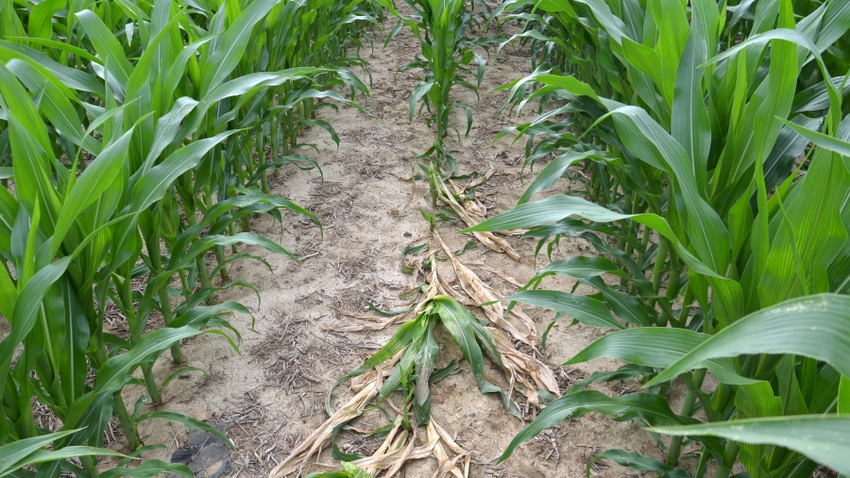
Most people think about yield comparisons, labor requirements and timing when they decide between applying nitrogen preplant or sidedressing later. Sometimes, the question may boil down to more pressing concerns. Should I be planting instead of applying nitrogen? Will I run over too much corn by sidedressing?
Jim Camberato, Purdue Extension soil fertility specialist, acknowledges upfront that he doesn’t have all the answers to these questions. There are simply too many variables, he insists. However, he’s willing to start the discussion.
If you have other questions for Camberato, send them to [email protected] or mail them to 599 N., 100 W., Franklin, IN. 46131.
I don’t like to sidedress because I knock down too much corn. How much potential yield loss does knocking down corn have compared to risking N loss by putting all N on preplant? Knocking corn down is very visual, while N loss is not visual early — unless it is severe and corn turns yellow. Can you give me a ballpark answer? There are too many factors at play in this question to give a good, confident answer. How bad is the tractor or sprayer driver? How early is N applied before planting — like, March, or just before planting? What kind of soil do you have? How much rain do you normally get?
In general, anhydrous ammonia applied within a few weeks of planting is not likely to lose significant amounts of N in most soils. Liquid N should be applied at planting or within days before to minimize loss.
If you put N on as urea or liquid N at planting and work it in, do you risk germination or emergence injury as you would with anhydrous applied too close to planting? There is no risk of germination or emergence injury if 50 to 60 pounds of N as urea or liquid N is broadcast-applied and worked into the soil near planting time. Yes, there is more risk of injury if anhydrous ammonia is applied within a few days of planting. However, potential injury on germinating seedlings from anhydrous depends on several factors, including weather conditions and soil types.
How can I minimize risk of anhydrous injury to corn seedlings when applying ammonia a few days before planting? The depth of anhydrous application and distance between it and planted rows are the most important factors in crop safety. Injecting 7 to 8 inches deep and at least 6 inches from the row offers a lot of safety.
Suppose spring 2023 is like ’22, with more wet than dry days early. It’s May 1, and you can put on ammonia or plant. How do you size up economics and agronomics? What if it is May 10? May 20? I suggest planting if you can sidedress or topdress after planting. The window for planting is much smaller than for applying N. Applying N after planting up to the V6 to V8 growth stages, which will be four weeks or more, is going to be the most efficient use of N fertilizer. It will require better tractor driving and take more time than applying anhydrous ammonia before planting.
About the Author(s)
You May Also Like




